-
Car Reviews
- Car News
-
Car Comparisons
Latest comparisons
- Chasing Deals
The five-door version brings newfound practicality to the Jimny nameplate. But in doing so, has it lost its core charms?
Suzuki has taken one of the world’s least pragmatic models, the three-door Jimny 4×4 wagon, and made it more sensible.
Enter the new five-door ‘extra-large’ XL. And if a quick straw poll of existing Jimny aficionados – and Chasing Cars knows a few – is anything to go by, a running theme is the question: why?
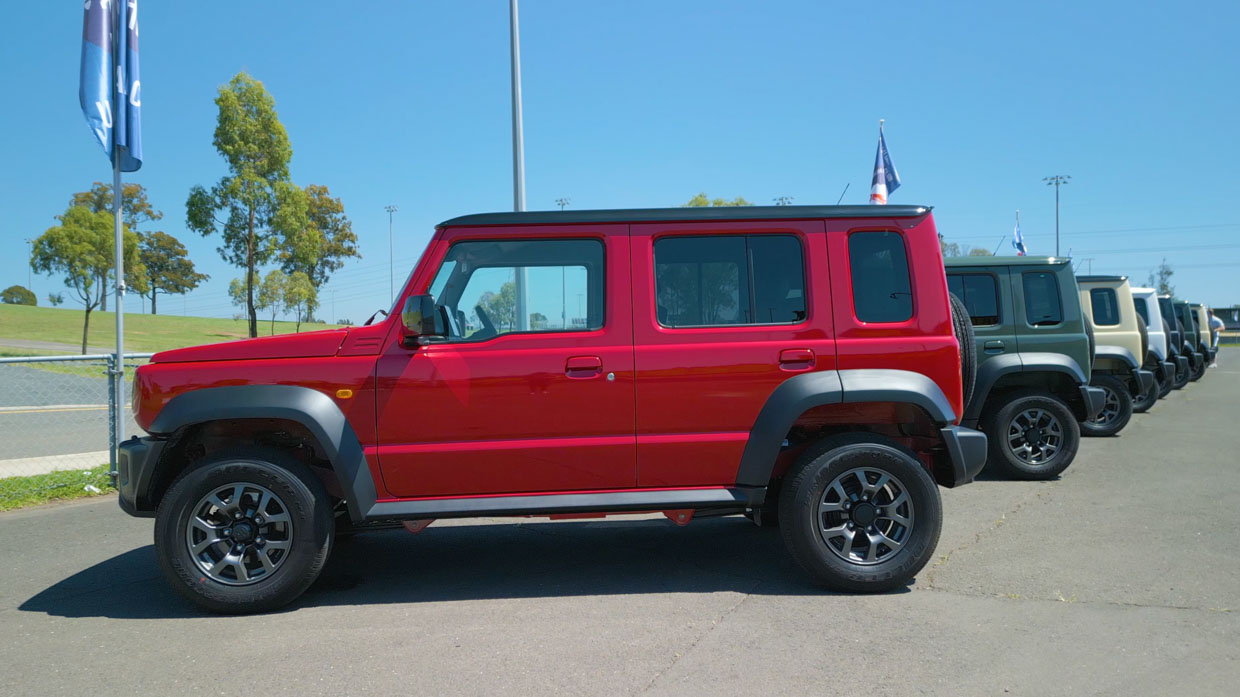
Of course, stretching the diminutive ‘classic-modern’ Jimny’s wheelbase by 340mm and adding two extra doors naturally adds practicality by way of added interior space. So the new XL is an answer to a question asked by some curious punters who like the Jimny jib if not the modest size of its cut.
The thing is…that’s exactly the whole point of the three-door, isn’t it? The major drawcard that has made Jimny a modern cult icon is that it’s a hugely affordable hard-core all-terrain 4×4.
And its cutesy, boxy and practicality-compromised package, paired with an underpowered manner and somewhat agricultural on-road experience, is actually centric to its charm.
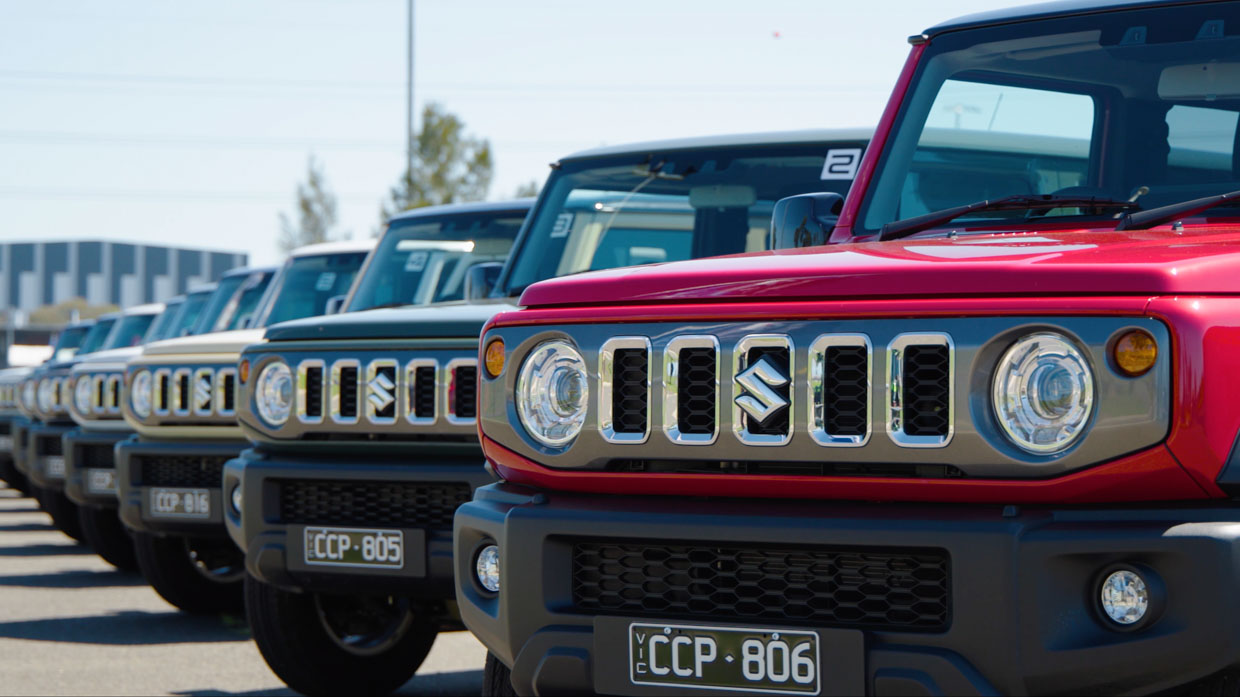
Potentially, by adding more to Jimny – more space, more tech, more pragmatism – does risk diluting the emotional drawcard stuff.
Besides, if you want a largely practical and sensible wagon-esque tiddler, the world is full of compact SUVs and crossovers that fit the bill neater.
In approaching reviewing the subject at its Australian launch, there are two underlying questions about XL: what’s changed in this growth spurt? And how much new stuff adds to or subtracts from the Jimny experience.
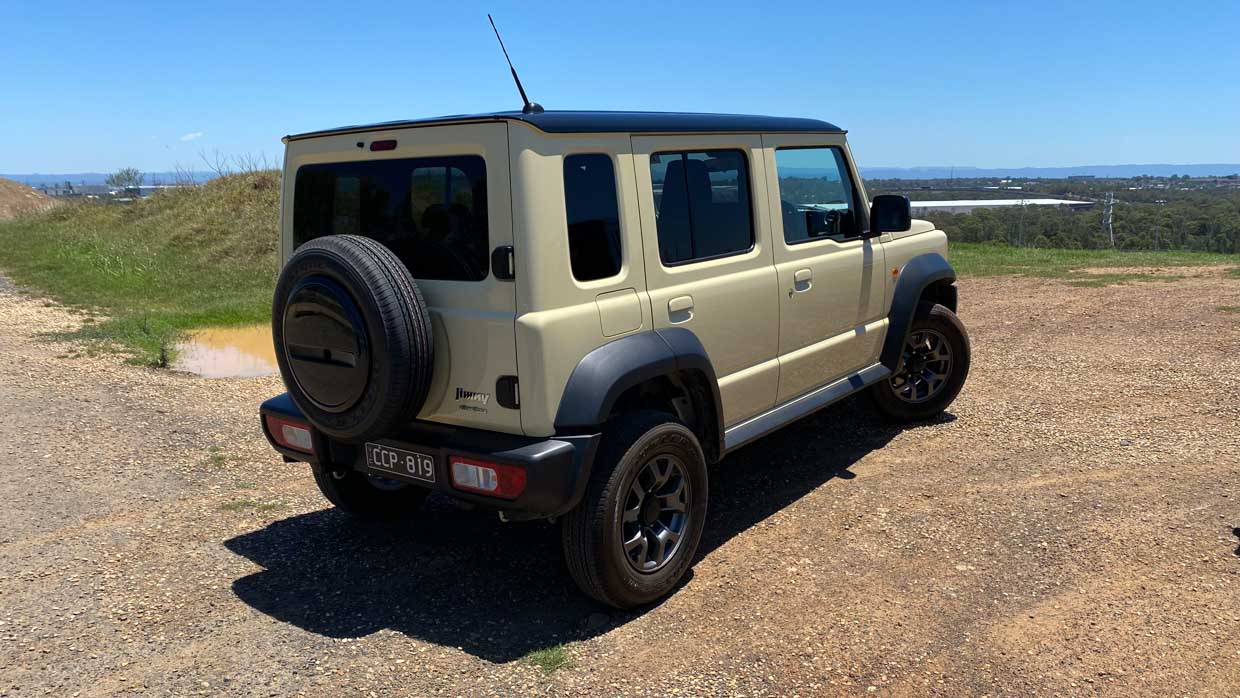
Design wise, the XL literally is, for the most part, the three-door version stretched. Its 34cm extra length adds 34cm of wheelbase so, unsurprisingly, it’s essentially the same front and rear with more added in the middle.
Indeed, the turning circle is up (0.8m to 11.4m), and while both Jimny formats bring 210mm of ground clearance, the XL’s wheelbase stretch sees slight reductions in approach (36 degrees) and departure (47 degree) angles, and a notable four-degree reduction in breakover angle (now 24 degrees).
The XL’s ladder frame gets an extra centre cross brace for rigidity and a support the XL’s added weight, which is just an extra 90kgs and remains a remarkable 1200kg in XL’s heaviest automatic-equipped guise.
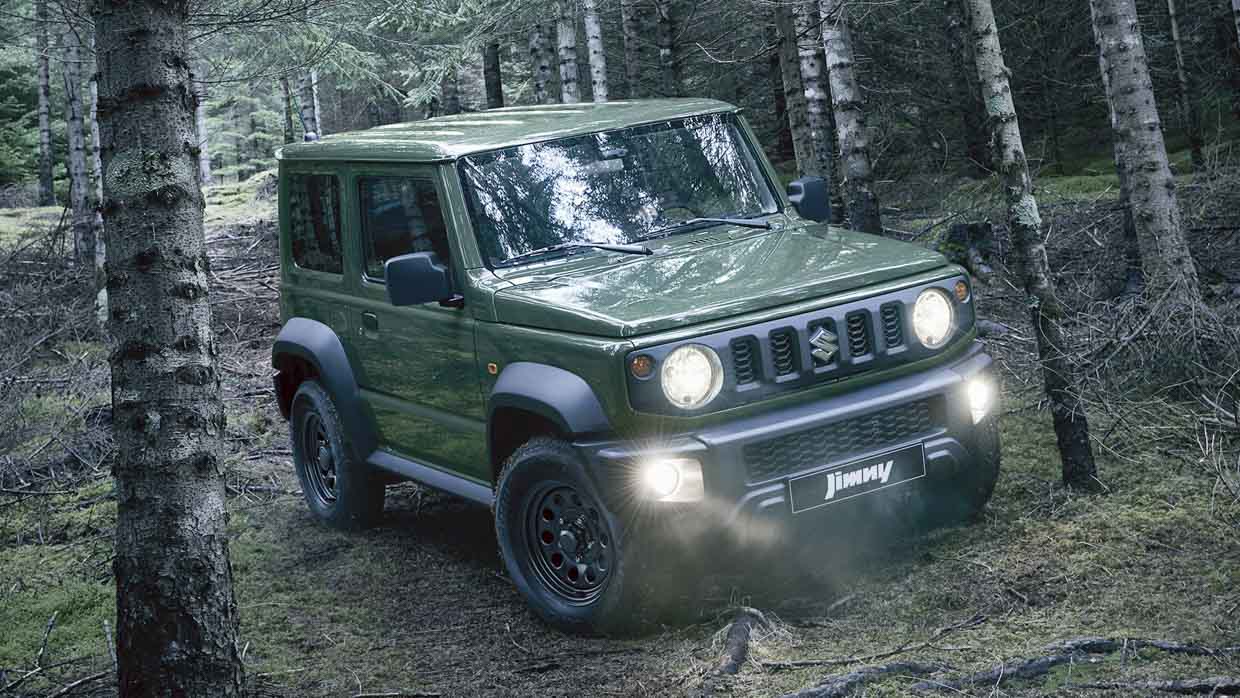
Pictured: the Jimny Lite three-door
The XL largely mirrors regular three-door Jimny in specification – rather than the stripper Jimny Lite – that extends from the evergreen 75kW and 130Nm 1.5-litre petrol four to the spare wheel on the rear barn door. Dual-range part-time 4×4 is, of course, carried over.
So what does XL change over three-door Jimny? A few things.
Underpinning wise, the automatic transmission is beefier, the tailshaft is larger in diameter, the front suspension spring and damper specs were revised and the anti-roll bar size increased. Also, ventilated discs were introduced to the front brake hardware.
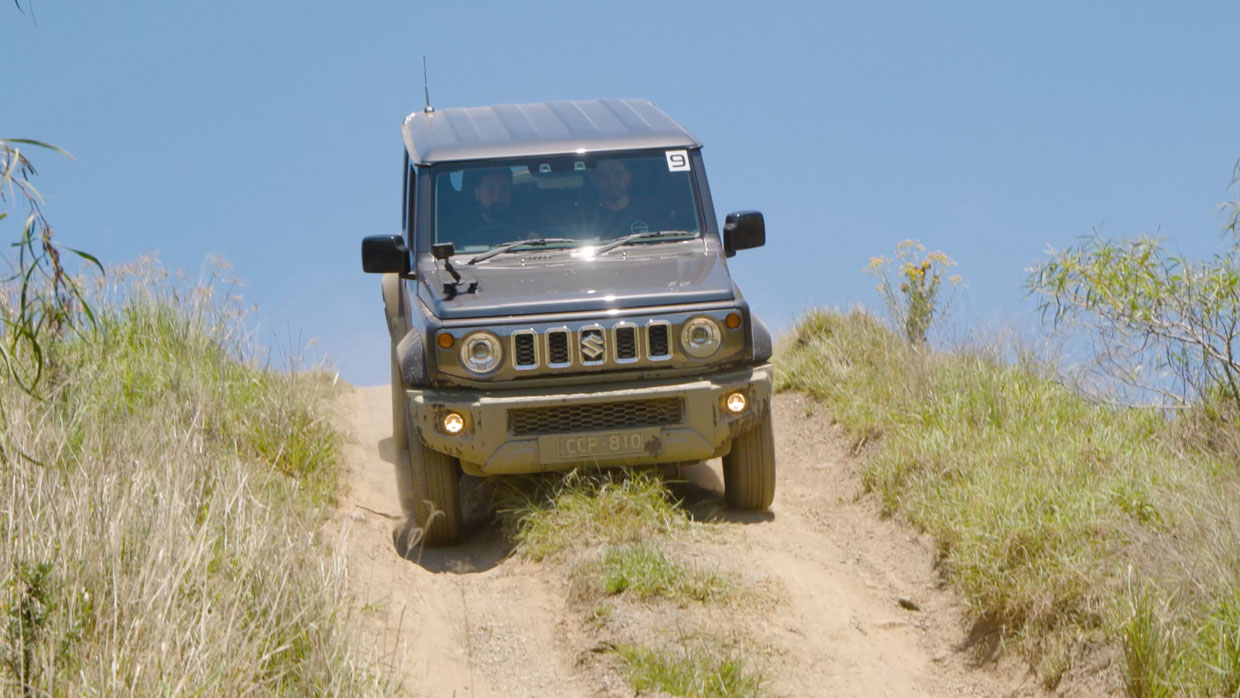
Safety has been been upgraded, including a new forward stereo camera system in place of the three-door’s mono-camera/laser radar array, bringing more effective forward collision warning and mitigation, as well as adaptive cruise control exclusively for automatic XLs. Wireless CarPlay, DAB+ and rear parking sensors, too, are XL extras.
If you do warm to the dachshund-like form and find yourself settling into the XL experience, it quickly becomes apparent that the stretched version brings a good many meaningful benefits, and that the Jimny breed has become significantly better served with its new choice of two body styles.
At $34,990 list for the five-speed manual and $36,490 list for the four-speed automatic, the five-door XL is effectively $3000 more than the ‘regular’ non-Lite three-doors that share a very similar features set.
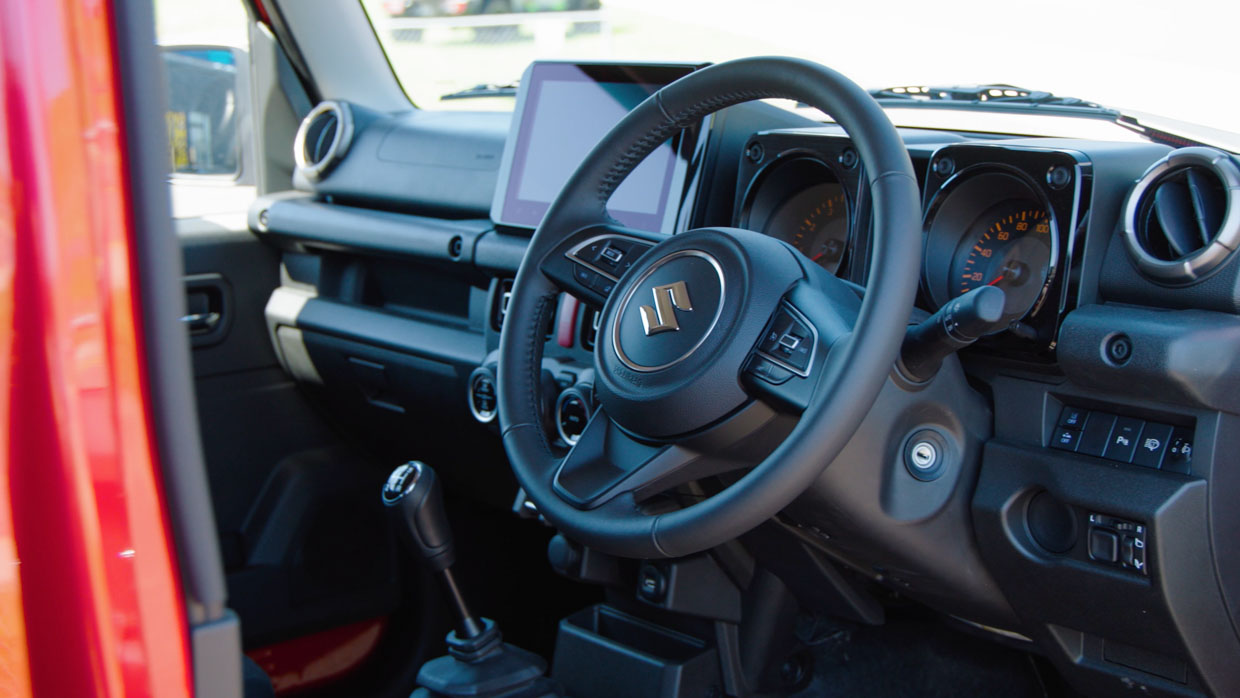
Yes, it’s slim pickings. But that’s the deal with Suzuki’s spin on cut-priced, all-terrain-capable motoring and it’s a formula that certainly hasn’t hurt the popularity of three-door Jimnys to date.
The Jimny XL is offered in six colours, including four classics such as Jungle green, Bluish Black pearl, Arctic white and Chiffon Ivory (tan)/Bluish Black roof two-tone. Further, two new options are available in Granite Gray metallic and Sizzling red metallic/Bluish Black roof two-tone.
Direct rivals to the Jimny are few and far between, but the Jeep Wrangler is the most obvious perhaps next to the Toyota Land Cruiser 70 Series. Both, however, are significantly more expensive and the latter is no longer offered as a two-door.
Beyond all else, the little Jimny three-door has long been an event to drive. For both good and not so great. And the five-door experience proves to be quite a familiar one.
The Aussie launch program for the Jimny XL offered two drive programs: one on road, one off road.
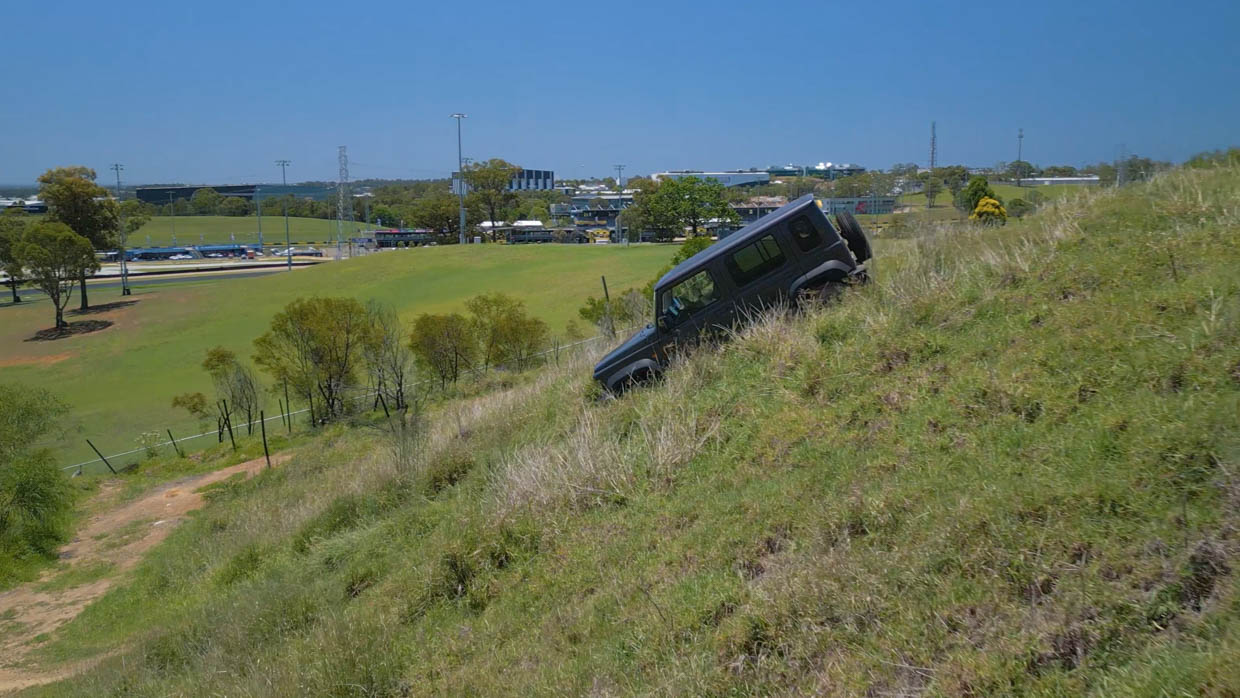
The former loop lasted about 15 minutes and contained about four corners. That’s it. However, the Jimny drive character is so idiosyncratic that, having driven numerous three-doors over the years, I can attest that the longer XL drives very similarly to the shorty on road.
But be it on road or off, Jimnys are full-bodied experiences at their helms.
The steering is aloof and requires constant and concentrated direction, the ride is fizzy across even the mildest hot-mix, and stability at any sort of decent velocity is questionable, partly due to the anemic tyres if largely due to dual rigid-axle three-link suspension arrangement concocted primarily for fun-filled trail blazing.
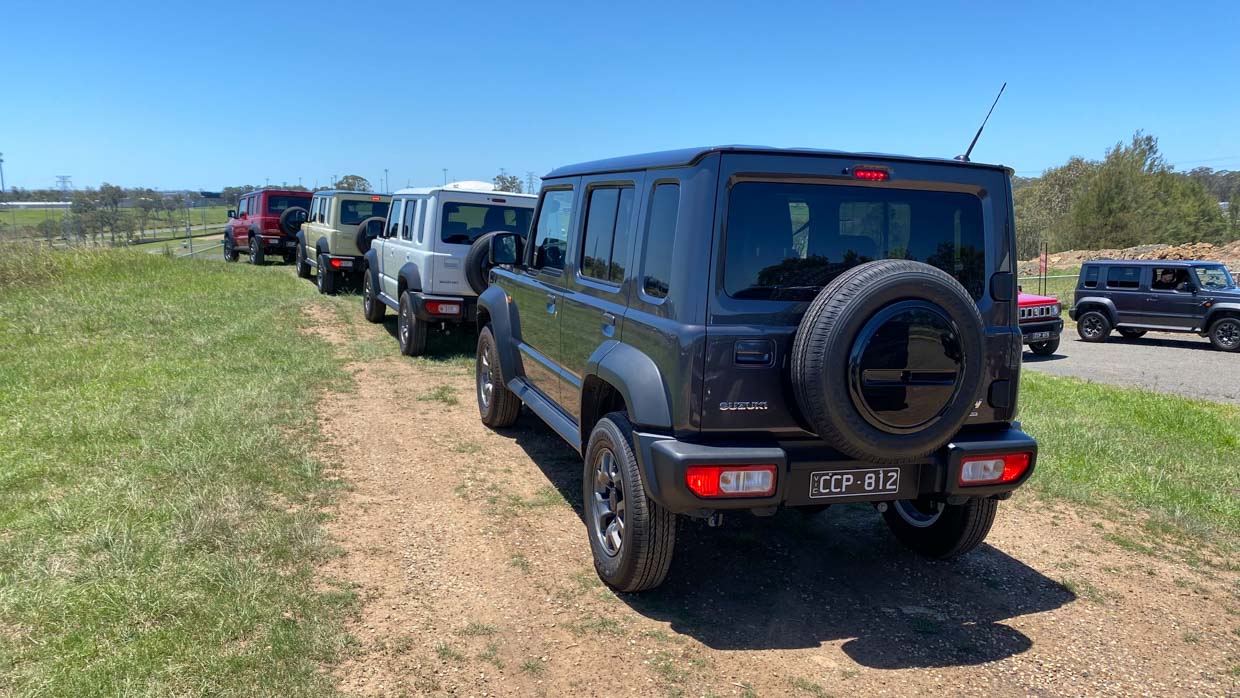
But it’s really the powertrain, especially the manual-equipped choice pitched at 4×4 traditionalists, that commands the utmost attention on road.
Even in a three-door Jimny (just 1095kg), the little naturally aspirated 1.5L is barely potent enough for the wagon to get out of its own way, even with nothing more than a driver aboard.
And with its slim 130Nm peak arriving way up at 4000rpm, you tend to spend 90 percent of the time at the helm mashing the right foot and wringing its neck while furiously thrashing away at the gearstick like an Olympic rower to keep what little output on the boil.
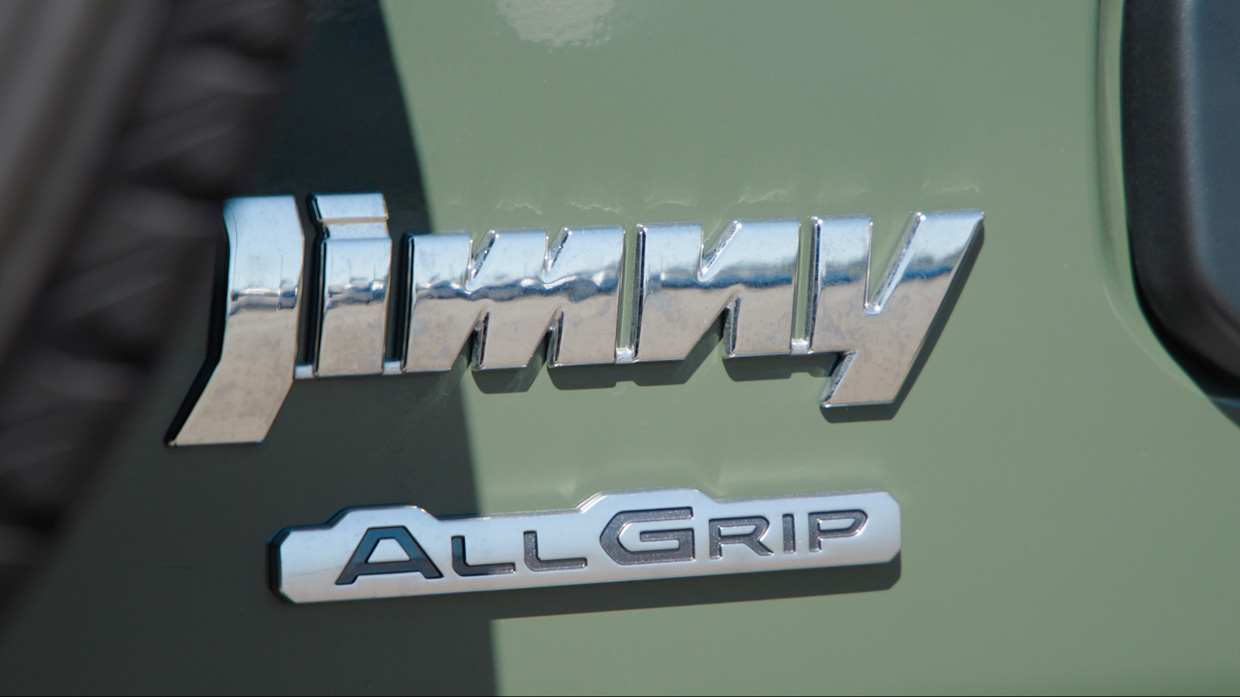
Or else you go nowhere, very slowly indeed. Understand that even keeping pace with traffic is, at times, a gym-worthy workout…but it can be a whole lot of fun without much risk to your licence. Punting a little manual three-door Jimny furiously through the urban jungle is an event literally no other vehicle can replicate.
Adding two extra doors, more wheelbase and a modicum of extra weight doesn’t dilute the Jimny experience…nor make it easier or more pleasant.
However, more interior room means facility for more payload of passengers and luggage, and given the XL hasn’t upped engine outputs, you’re potentially looking at a slower, more frustrating drive when making use of the XL’s added practicality and utility.
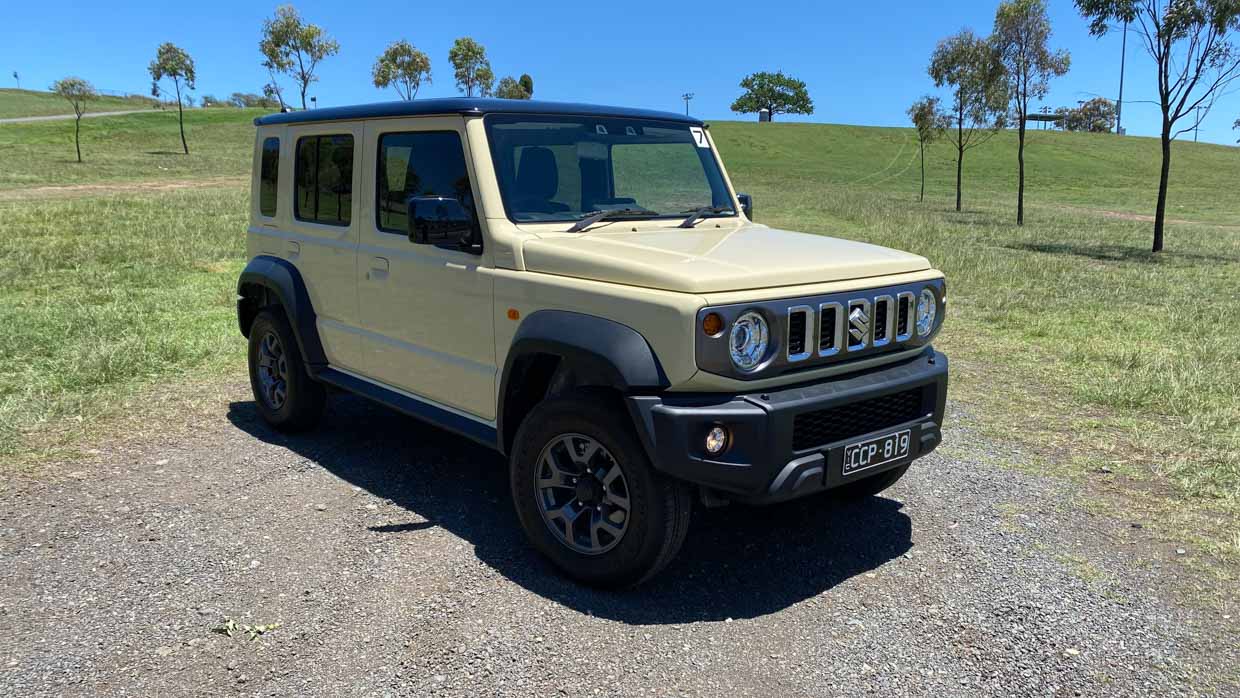
The XL is a little nicer at speed and while cruising than the three-door, but a grand tourer it is not. You’ll have to suffer some on the road to get the real fun off the beaten path, which is par for this 4x4er’s course (or the likes of Jeep Wrangler, for that matter).
Despite the firmer front suspension, the XL still has Jimny’s signature ‘wobble’, a result of flaccid anti-roll control to facilitate extended wheel articulation off-road. The obvious party trick is that when occupants sway side to side in their seats, a stationary Jimny wobbles about like a smacked bobblehead toy.
The sight of eight or so XLs, stopped line astern at traffic lights, rocking about on flaccid suspension to the hilarity of a group of childish onboard journalists, must’ve been quite the sight to onlookers…
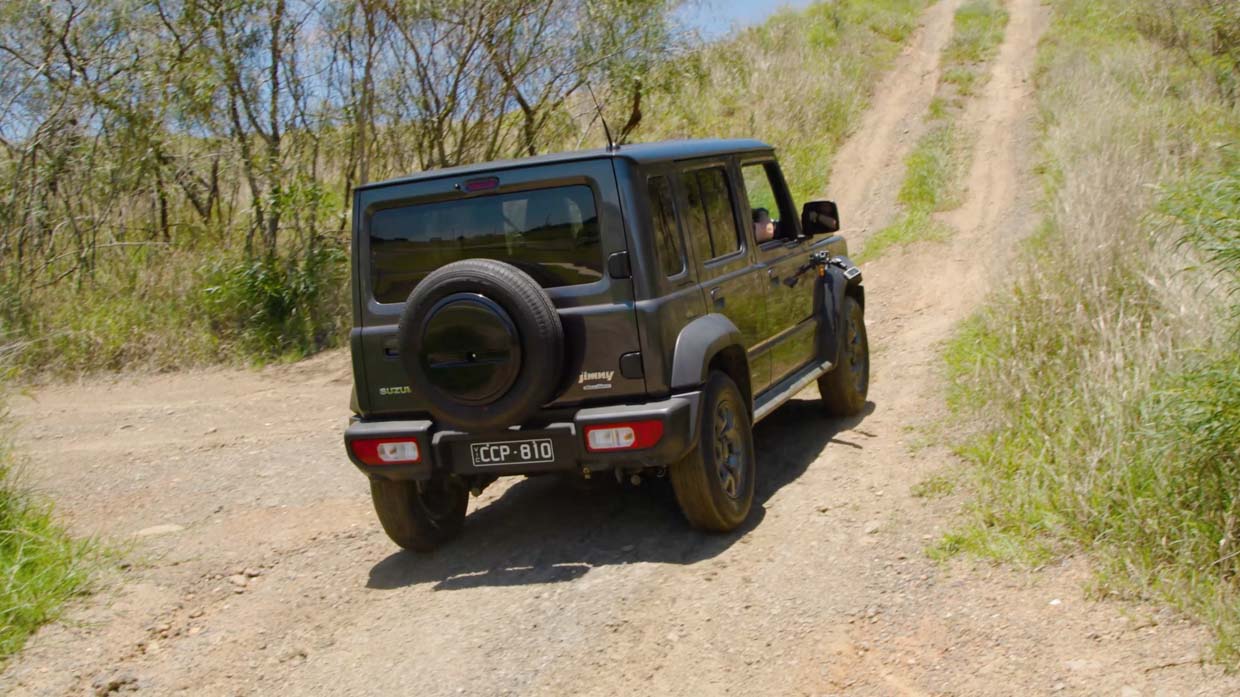
The off-road experience, which lasted a good hour and half, was far more serious yet just as fun. Even moreso. Because despite its price-conscious nature and off-the-showroom floor state, the Jimny XL is a seriously capable dirt-kicker that proves unstoppable across the hairy off-road course at Sydney Motorsport Park.
I’ll spare you the blow by blow, but steep drops were dispatched with deft hill descent control, perilous climbs were clambered confidently in spite of the punt 195mm tyres and anemic engine outputs, moguls were flattened with aplomb and serious water was waded, the latter deep enough that one pair of journalists got a mud bath after deciding to traverse the crossing with the side windows down.
I’ve done a bit of off-roading in my time, though little of it has been in manuals and a lot of it has been in techier machinery with loads of active assistance. The Jimny, though, is a properly old-school ‘natural’ experience, one that’s impressively capable yet demands skilled direction and cooperation from the driver.
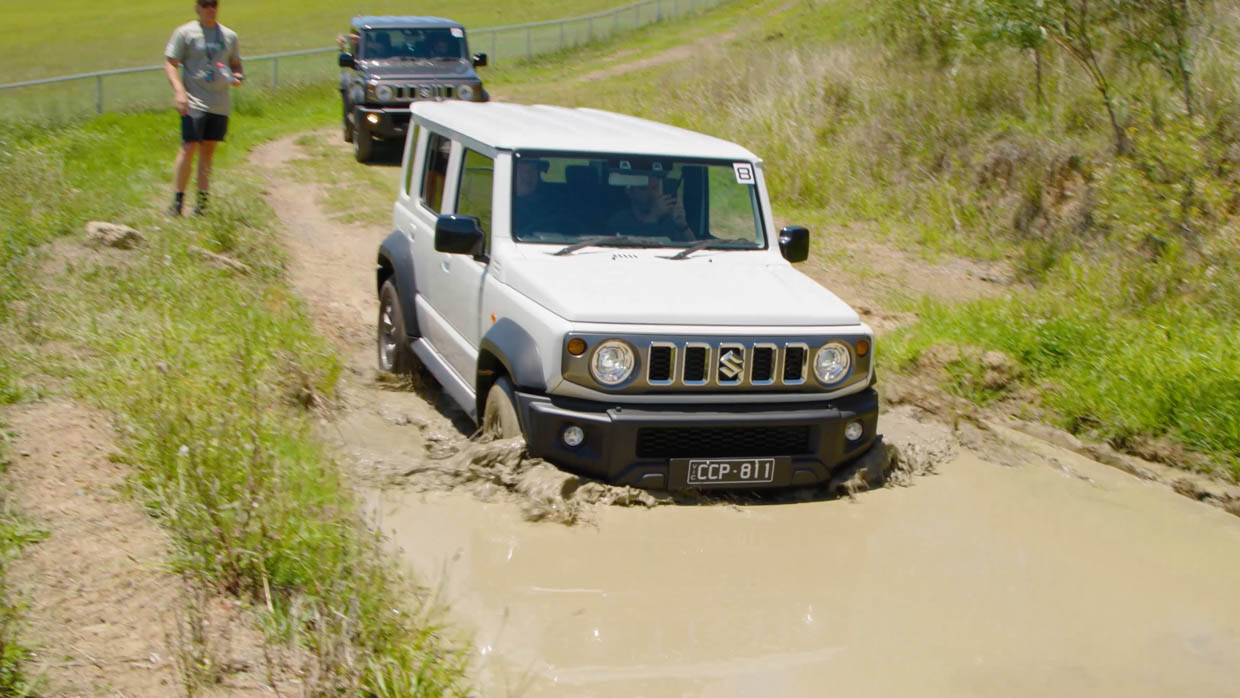
According to Suzuki, inexperienced Jimny drivers often come unstuck mid-adventure because of clutch issues with drivers riding the left pedal. And what really is key to the XL’s rough-track capabilities is just how much control and precision it offers in first gear and with low-range 4×4 engaged.
The powertrain’s almost embarrassing clumsy, hard-rowing nature on road suddenly makes all of the sense in the world in harder off-road challenges.
It lopes along very slowly with stammering, throttle progression is hugely cooperative, and that high 4000rpm torque peak is easy to pluck exactly where and when you need it, particularly attempting to climb anything particularly steep and treacherous.

Sure, the compromised clearances and wider turning circle than the three-door does make it less nimble in the twistier parts of the course, but the trade is that you can genuinely get four adults and a proper camping swag to the far reaches of tough trails, where you’re transporting far less in the three door.
Of course, that’s because the XL is vastly more practical when it comes to interior space and packaging…
For all of its fitness for purpose and Noddy Goes To Toytown charm, the three-door’s interior presents some serious practicality compromises. And the larger XL attends to a good chunk of them.
In the three-door, you’re faced with the choice of four (usable) seats and not boot, or to convert to a two seater and something that resembles a boot yet is thoroughly inconvenient.
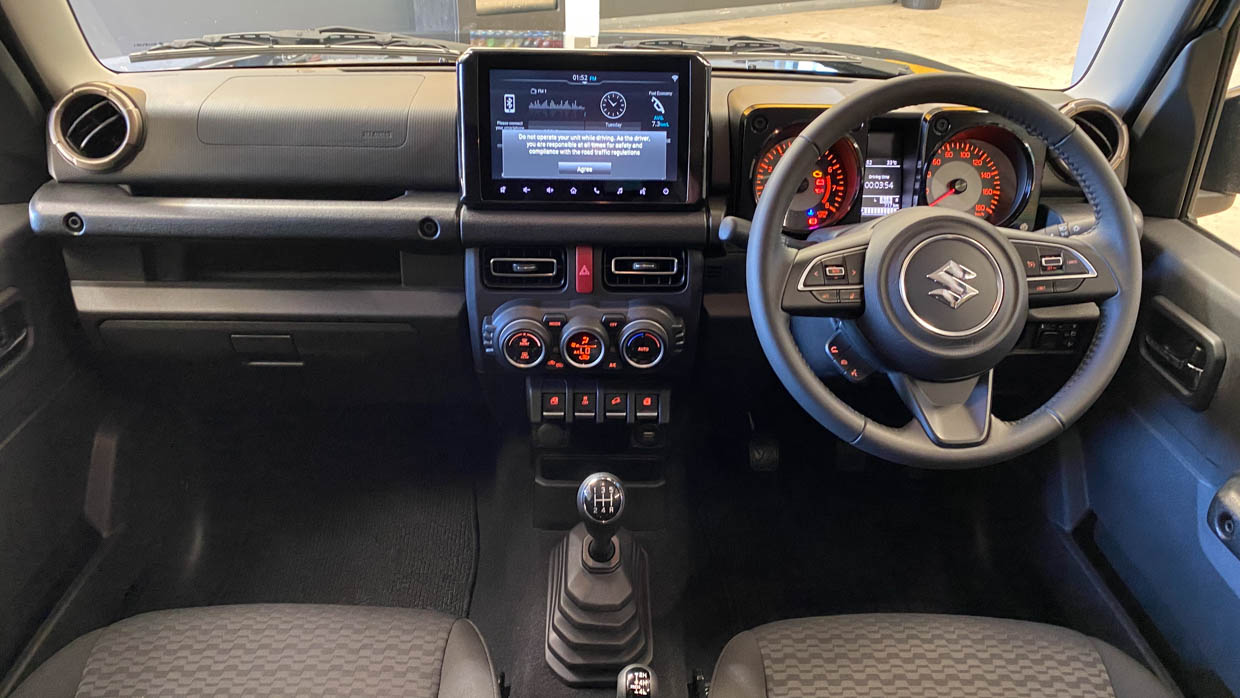
Why? Because when you stow row two, the load space is tiny and the seatbacks are shelled with hard plastic that forms the surrogate floor: anything you put in there, such as the weekly groceries, simply slides around and flies everywhere.
Further, climbing into and out of row two in the three-door is extremely difficult for those of us who don’t perform acrobatics in Cirque du Soleil. And it’s quite a miserable place to spend any time if you’re above five-foot tall.
The XL fixes all of this. Obviously, rear occupants get doors and they access a passenger space that is sized and packaged like a conventional second row. The rear bench, with thicker cushions, is vastly more shapely and comfy. It offers superior underthigh support, a decent seat back rake, and there’s ample knee and headroom for six-footers such as your reviewer.

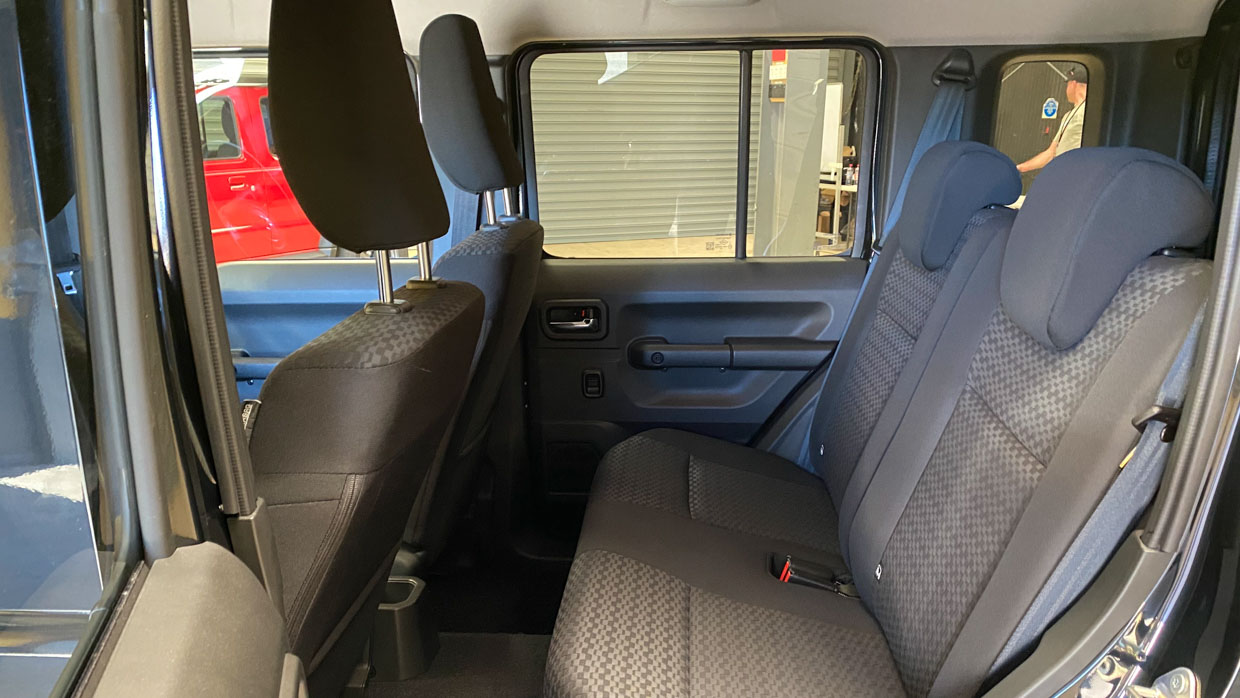
You also get a real boot that’s sensibly proportioned and large enough for camping swag.
On paper, there’s not much of an advantage, advertising 85L for the three-door and 211L for the five-door. In practice, the XL gets a real full-time boot where the three-door doesn’t. The extended wheelbase lengthens the luggage area and drops the load level dramatically.
Everything stowed, there’s up to 1113L of volume available, including space for bicycles and whatnot that you wouldn’t dream of stuffing into the shorter format.
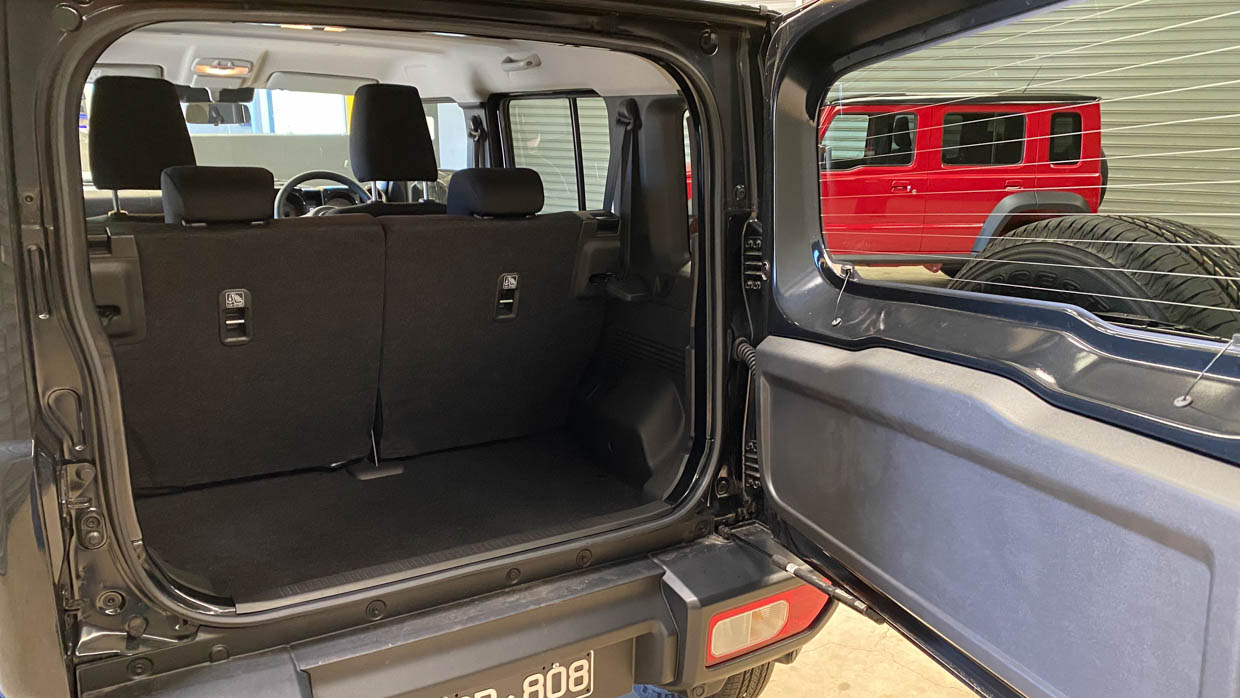
It’s still a side swinging rear door – due to the weight of the rear-mounted spare wheel – and, like any vehicle with this door type, it does force you to park nose-in for trips to the supermarket if you want to load anything into the rear.
Up front, there’s little to distinguish the fiver from the three-door. There’s a fittingly utilitarian vibe minted in hard, durable plastic for the most part, solid in nature if modest and workmanlike in design.
The seats are supportive enough, though the upright nature means that it’s tough to find a relaxing posture for long-haul driving. It’s a narrow cabin and elbow room is at a premium, a situation best served with an elbow perched on the windowsill if it wasn’t something the authorities tend to frown upon.
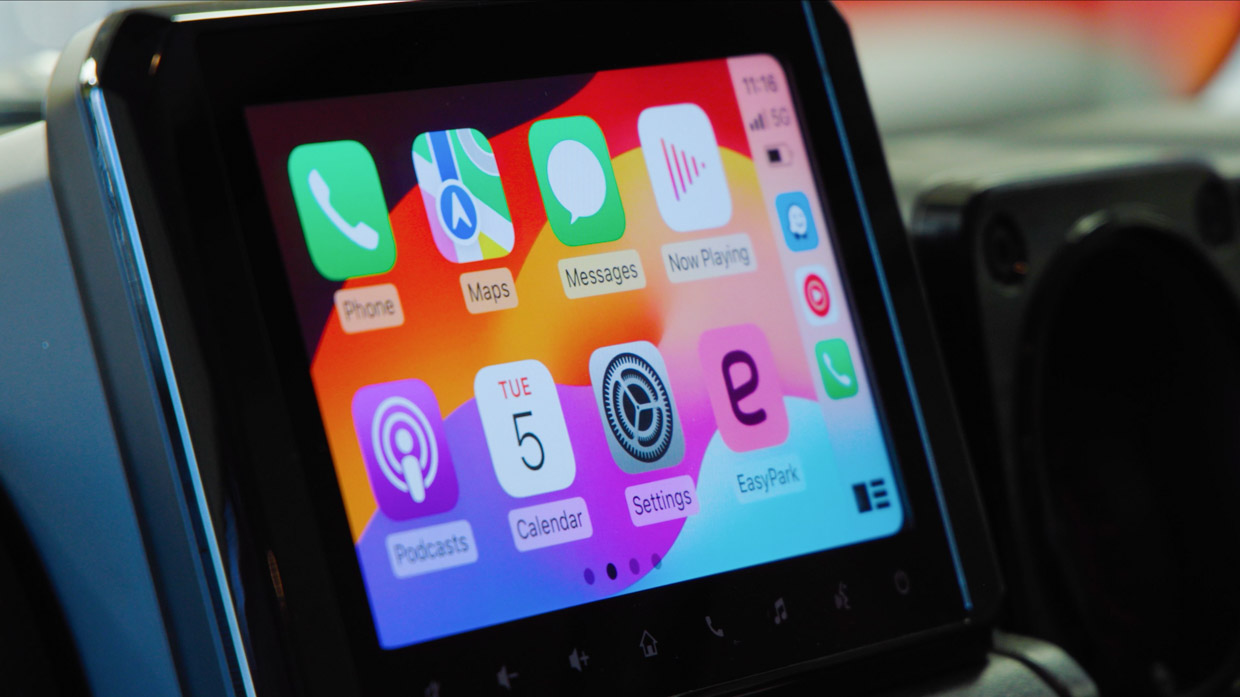
On the plus side, the large glasshouse affords excellent outward visibility, and almost all of the controls have a nice, old-school clarity to where they’re located and how they’re labelled. Storage, though, is really at a premium: bar two cup holders behind the front occupants’ elbows, there is nowhere other than the glovebox to stow wallets, keys and other oddments.
I found the best place for my phone was in the slim door bin, which is of no help to Android owners who need to tether for phone mirroring. At least the XL has upgraded the Jimny experience to wireless Apple Carplay, which isn’t currently offered on the three-door.
On that, the 9.0-inch media system is rudimentary but not necessarily low-rent for the Jimny XL price points. And DAB+ is a nice inclusion. But, seriously, just one USB-A outlet Suzuki…?
The Jimny XL isn’t currently rated by ANCAP. But for some context, the three-door carries a less-than-ideal three stars out of five.
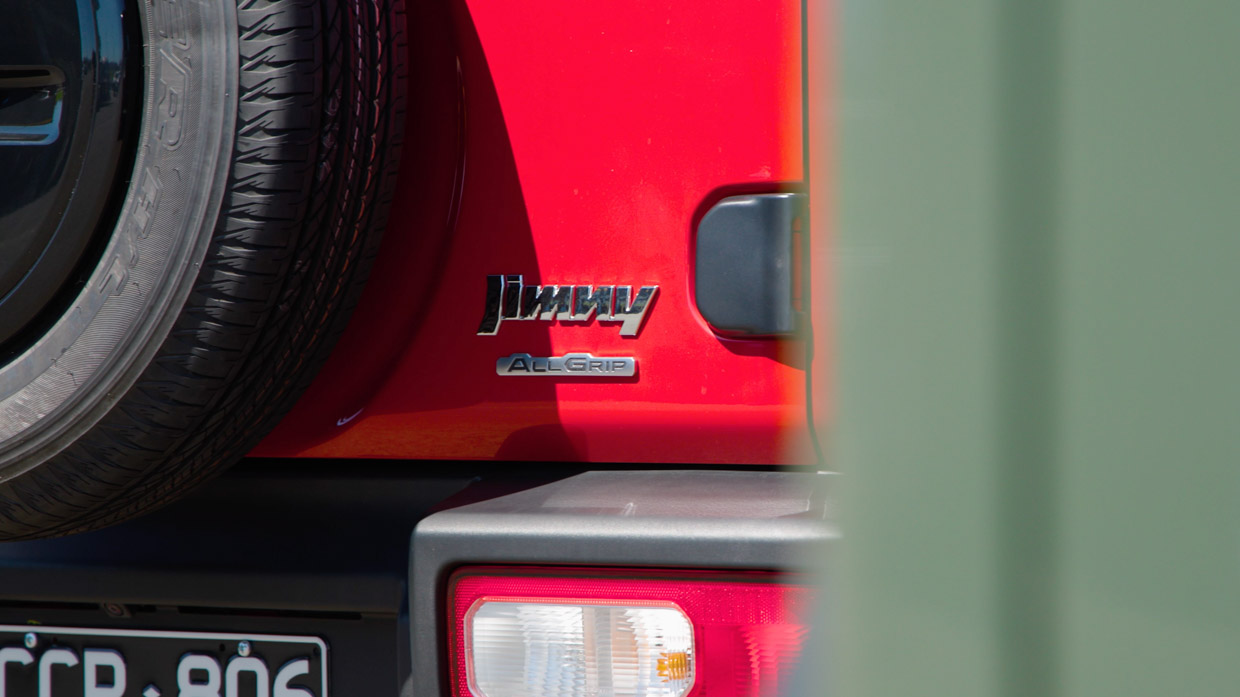
Standard inclusions are:
While there’s certain consideration that Jimny is an off-roader for the road and one that certainly brings all-terrain safety by way of core capabilities, the safety fit-out is slim when viewed as an on-road passenger car prospect.
The Jimny XL is advertised with a 6.4L/100km and 6.9L/100km combined consumption for the manual and autos respectively. While far from indicative, our brief drive of the manual returned 7.8L indicated for road and 8.1L for off-road.
It is covered by Suzuki’s five-year, unlimited-kilometre warranty.
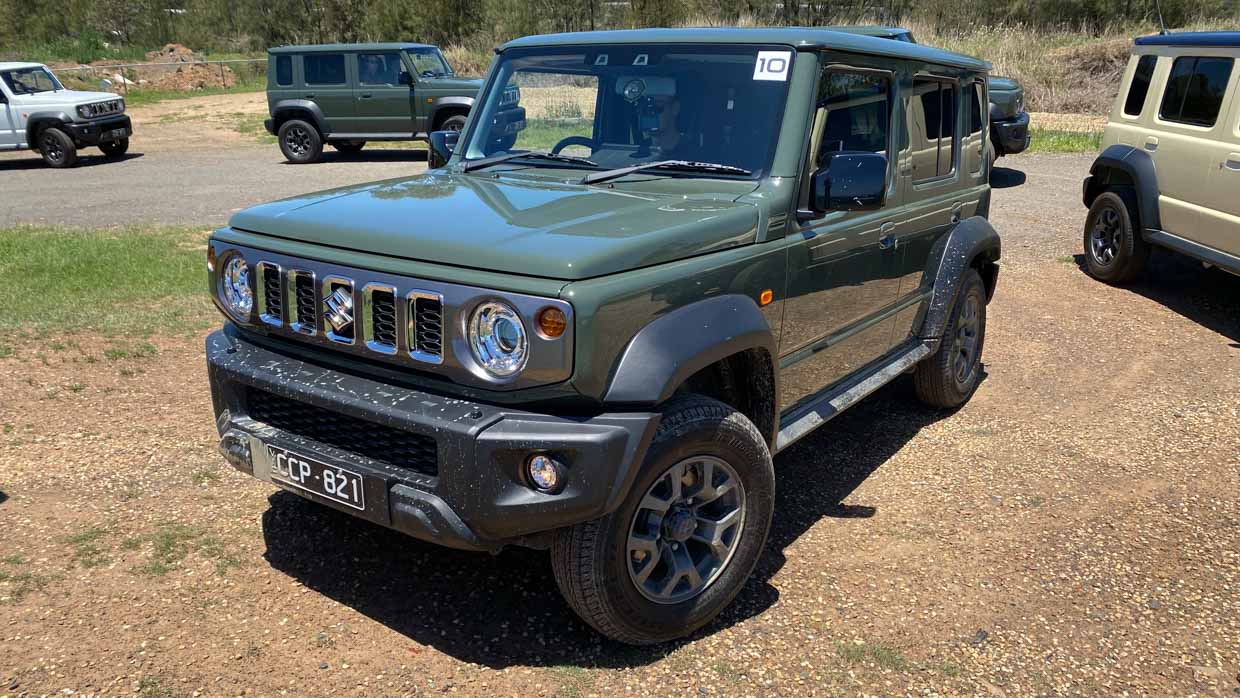
Suzuki offers capped-price servicing that covers up to five years and 100,000km, though servicing intervals are at 12 months and 15,000km intervals.
Interval pricing for Jimny ranges between $349 and $589 per visit, for a total outlay of $2265 – not cheap, though there should be some consideration to the all-terrain format and extra attention and checks required during servicing visits.
The Jimny was always intended as a fairly specialised vehicle for particular buyers, a fringe dweller not intent on mass-market appeal, but a highly affordable entry point into bona-fide off-roading.
It’s supremely capable turnkey and – as Suzuki is well aware – an absolute no-brainer as a modification platform.
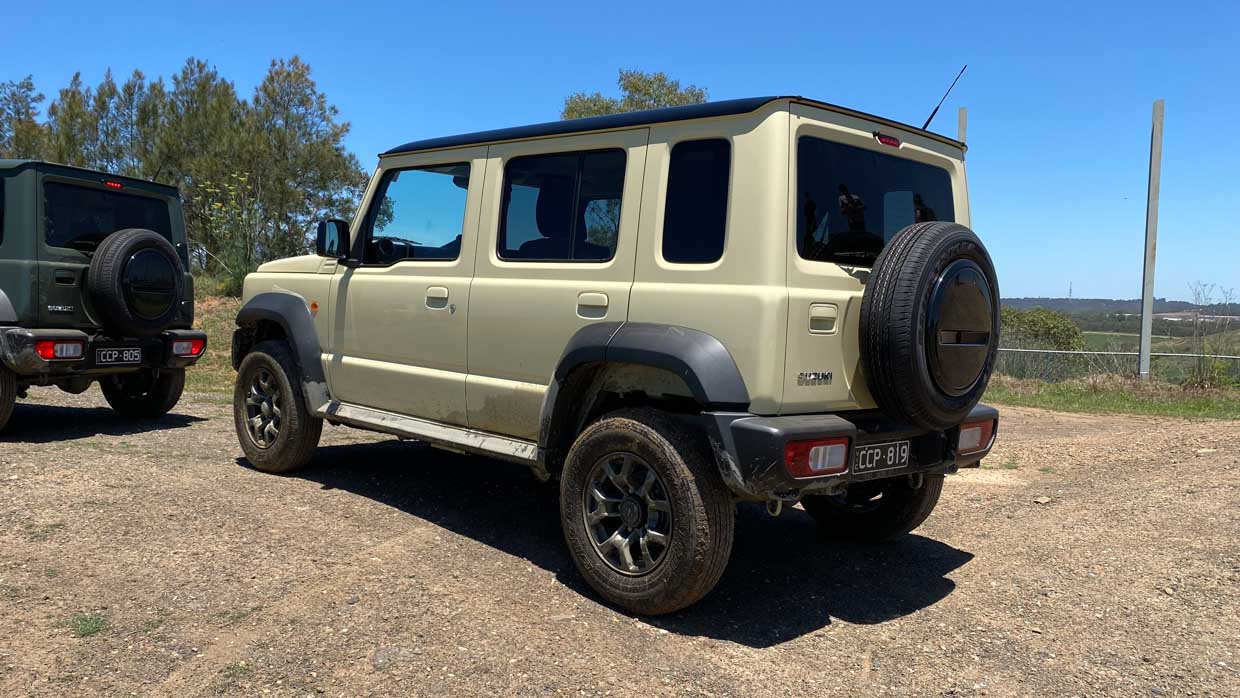
When the three-door launched, its attainable price point and ice cool charisma made it something of an instant cult car, one very much sought after by as many city slicker urbanites as anyone else.
Your reviewer has long been a three-door Jimny fan. I get it. And on evidence I’m not alone – there are plenty running around in my neighbourhood, none of which I suspect have ever seen an off-road trail to date.
As much as the XL seems to dilute some of the three-door’s purity of essence, I’d be very inclined to opt for the five-door instead. What you lose in sheer charm factor, you gain in a more generally usable package that doesn’t rob much from the three-door spirit.
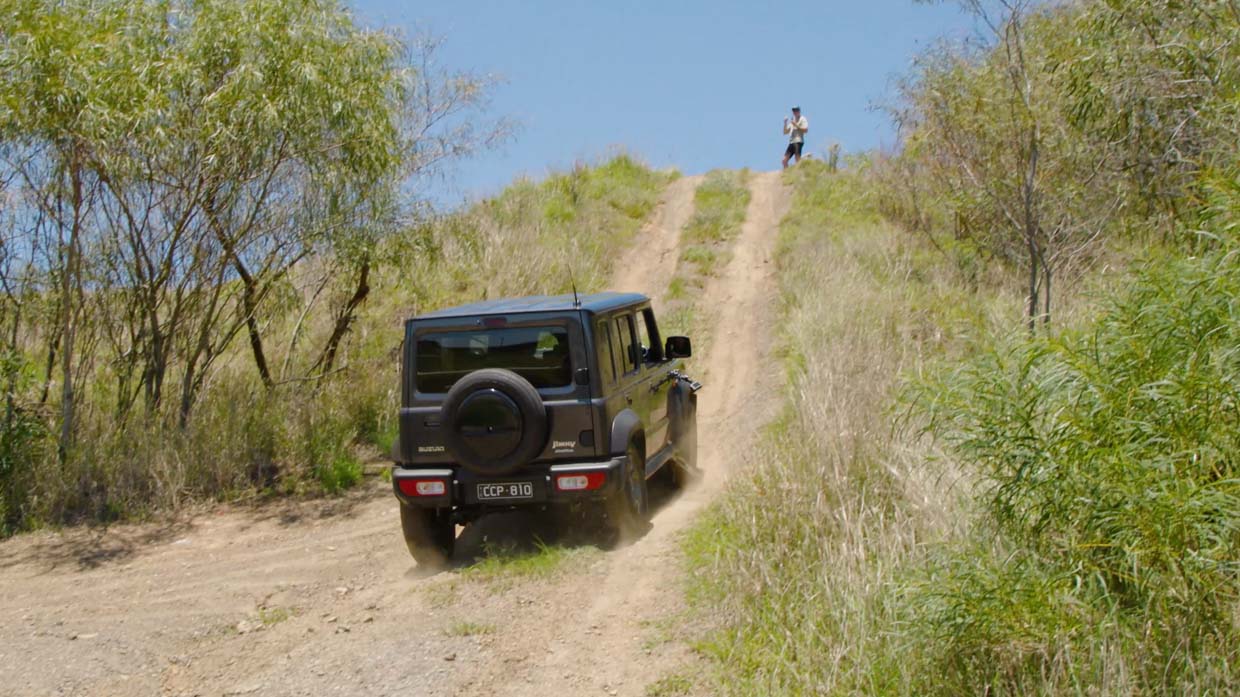
On the plus side, the three-grand walk-up seems perfectly reasonable for what is still a bargain basement all-terrain proposition with a still very enticing value factor. And its off-road chops for money are remarkable.
I’m not sold on the stretched styling, but that’s an inevitable byproduct. And while I do think it needs a few more herbs under the bonnet, the powertrain is an impressively good fit for the off-road main game it’s pitching.
It’s not for everyone, but perhaps more than Suzuki can currently cater for. Even before the XL was launched and prior to the pricing announced, the wait times on delivery of the five-door has (ahem) stretched out to nine months…
About Chasing cars
Chasing Cars reviews are 100% independent.
Because we are powered by Budget Direct Insurance, we don’t receive advertising or sales revenue from car manufacturers.
We’re truly independent – giving you Australia’s best car reviews.
The estimate provided does not take into account your personal circumstances but is intended to give a general indication of the cost of insurance, in order to obtain a complete quote, please visit www.budgetdirect.com.au. Estimate includes 15%^ online discount.
^Conditions Apply
Budget Direct Insurance arranged by Auto & General Services Pty Ltd ACN 003 617 909(AGS) AFSL 241 411, for and on behalf of the insurer, Auto & General Insurance Company Limited(ABN 42 111 586 353, AFSL 285 571).Because we don’t know your financial needs, we can’t advise you if this insurance will suit you. You should consider your needs and the Product Disclosure Statement before making a decision to buy insurance. Terms and conditions apply.
Indicative quote based on assumptions including postcode , 40 year old male with no offences, licence suspensions or claims in the last 5 years, a NCD Rating 1 and no younger drivers listed. White car, driven up to 10,000kms a year, unfinanced, with no modifications, factory options and/or non-standard accessories, private use only and garaged at night.
^Online Discounts Terms & Conditions
1. Discounts apply to the premium paid for a new Budget Direct Gold Comprehensive Car Insurance, Third Party Property Only or Third Party Property, Fire & Theft Insurance policy initiated online on or after 29 March 2017. Discounts do not apply to optional Roadside Assistance.
2. Discounts do not apply to any renewal offer of insurance.
3. Discounts only apply to the insurance portion of the premium. Discounts are applied before government charges, taxes, levies and fees, including instalment processing fees (as applicable). The full extent of discounts may therefore be impacted.
4. We reserve the right to change the offer without notice.